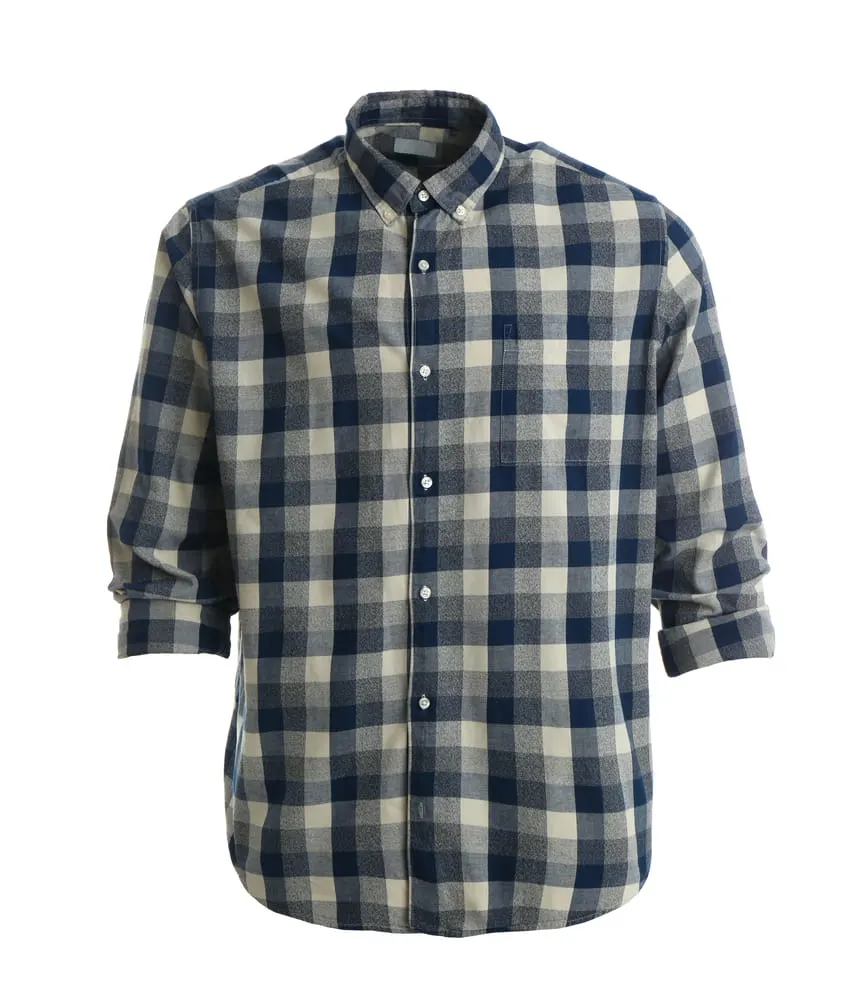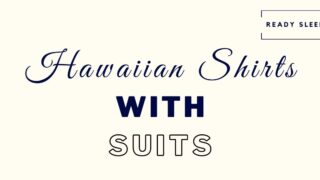Flannels are great layering garments; however, they’re usually worn as an overlayer. Sweaters, on the other hand, can be used as both. So, can you wear a flannel under a sweater?
Wearing a flannel under a sweater looks great on casual occasions. Consider the style of your sweater and ensure your collar is visible. Block-colored sweaters work best, and leaving your flannel untucked is usually optimal.
While that’s the short answer, there’s much more to it.
Let’s look into this in more detail.
1. Consider Sweater Style
The first thing to consider when wearing a flannel under a sweater is the style of the sweater you wear.
Flannels are generally the same or similar styles to one another but come in different colors and patterns.
On the other hand, there are many sweater styles. In fact, there are so many that it can be difficult to know which one is the best to wear with a flannel.
Typically, sweaters can be broken down into four distinct categories: crew, high, and V-neck sweaters, and zip sweaters.
Crew necks are the most common sweater style and what most people initially associate with the term “sweater.”
They are characterized by their round neckline and lack of collar.
On the other hand, high neck sweaters rise higher at the neck than most other sweater styles, making them easy to identify.
V-neck sweaters are a little more formal-looking. They have a low-cut, V-shaped neckline. The depth of this neckline varies for each V-neck sweater.
Finally, zip sweaters are similar to V-necks, except the V-shape is less prominent and can be zipped up or down accordingly.

The crew neck and zip sweaters are the best sweater styles to wear over a flannel.
High neck sweaters such as mock necks and turtlenecks would be uncomfortable due to the flannel’s underlying collar, while V-necks would usually look too formal.
Furthermore, when wearing a flannel under a sweater, it’s best to ensure your flannel’s collar is visible. Wearing a high neck sweater such as a mock neck or turtleneck would prevent this.
2. Ensure Your Collar Is Visible
Because flannels are often patterned and brightly colored, the collar is too.
This means that part of the appeal of wearing a flannel is the prominent collar.
Moreover, when wearing a flannel under a sweater, the collar is the primary part of the flannel that’s visible. This makes the collar’s significance even more so.
Therefore, ensuring your collar is visible with this outfit is essential.
While there are two main ways of wearing your collar with this outfit, the one you choose is down to personal preference.
The first way you can wear your collar is by pulling it over the sweater’s neckline.
This makes the collar immediately noticeable and enhances the pop of color it adds to the outfit.
Another way to wear your collar is more subtle. Simply wear your flannel as you usually would, and pull the sweater over the top – leaving the collar tucked in.
Regardless of which style you choose to wear your collar, remember that it should always be symmetrical.

An uneven collar looks awkward and clumsy and can make you appear scruffy – this should always be avoided.
3. Tucked Vs. Untucked
A common query about wearing a flannel under a sweater is whether or not you should tuck in your flannel.
It’s important to remember that flannels are pretty casual garments.
Similarly, while some sweaters can be worn smart casually, the majority of the time, they’re casual too.
Tucking in your shirt is usually associated with formalwear, and due to the casual nature of wearing a flannel under a sweater, it isn’t necessary for this outfit.
That is to say, it’s best to leave your flannel untucked.
Not only does it add to the casualness of the outfit, but leaving the bottom of your flannel visible underneath the sweater also adds a dash of extra color to your outfit.
However, the flannel isn’t the only part of the outfit; sweaters can also be tucked in. That being said, like your flannel, it’s best to leave your sweater untucked.

4. Block-Colored Sweaters Work Best
When wearing a flannel under a sweater, it’s best to go for block-colored sweaters.
Block-colored sweaters are those consisting of only one color – without any patterns.
This is because flannels usually have patterns on them and the combination of two patterned garments looks overly flamboyant.
While this isn’t always the case, it’s a pretty good rule of thumb that you should avoid two patterns when layering garments.
Sticking to a block-colored sweater is your best bet.
Furthermore, this guideline remains regardless of the sweater style you go with.
That being said, sweaters sometimes have a textured appearance. A textured sweater is acceptable to wear over a flannel.
5. Think About The Color Of Your Sweater
Knowing the best sweater color to wear over a flannel can be difficult – particularly because of the patterned nature of flannels.
And to be honest, there is a huge number of potential color combinations for this outfit.
However, there’s a simple guideline that will ensure you pull it off every time: stick to neutral colors.
Neutral colors are those that don’t appear on the color wheel. This makes them versatile and means they pair nicely with most colors – including other neutral ones.
Examples of neutral colors include black, white, cream, navy, grey, and brown.
A color that works particularly well with flannels is grey.
Whether you’re wearing your flannel as an overlayer or – in this case – an underlayer, grey is a fantastic accompaniment to it – regardless of your flannel’s colors.
One of the great things about grey is that it is available in so many different shades – so many that you’ll be able to find a shade to pair with pretty much anything.
Beige sweaters also look fantastic with a flannel underneath. Beige is a neutral color too, so it pairs with most flannel colors.
6. Assess The Formality Of The Situation
As for any outfit, it’s important to assess the formality of the situation.
That being said, it’s particularly important with a flannel under a sweater due to the potentially mixed opinions on the outfit.
Moreover, wearing a flannel when a dress shirt, for example, is expected, would leave you incredibly underdressed and could potentially be seen as disrespectful.
Flannels are very casual garments, so they should be treated as such.
Sweaters, on the other hand, are a little more complicated. This is due to the variety of sweater styles – as each style has its own formality level.
As mentioned, there are four primary styles of sweaters: V-neck, crew neck, high neck, and zip sweaters.
Of the four, the V-neck is the most formal and, therefore, isn’t the optimal sweater to wear over a flannel – though it can be done.
High neck sweaters aren’t necessarily formal, but their lack of collar visibility deems them sub-optimal to wear with a flannel.
Coming to crew neck and zip sweaters, neither is inherently formal or casual, and both allow the collar of the flannel to be seen.
Therefore, these two sweater styles are the best options to wear over a flannel.
7. Button Your Flannel
Flannels are often worn as an overlayer. When worn as such, their buttons are usually left undone to create a layered effect.
When wearing a flannel underneath a sweater, it’s best to do up most buttons of your flannel – leaving only one or two top ones undone.
Not only would leaving your flannel’s buttons undone be uncomfortable, but it also looks awkward.
The sweater overlayer moves around as you move, and having a loose, unbuttoned flannel underneath would also cause the flannel to move.
Furthermore, leaving it unbuttoned all the way often causes the collar to twist awkwardly when wearing something over the top.
Keeping it buttoned up ensures that it stays in the position that it should – without moving around.
That being said, it’s best to leave the top one or two buttons undone so that the flannel isn’t restrictive around the neck.
This also gives the outfit a more relaxed vibe, as done-up top buttons are usually associated with formal attire.







